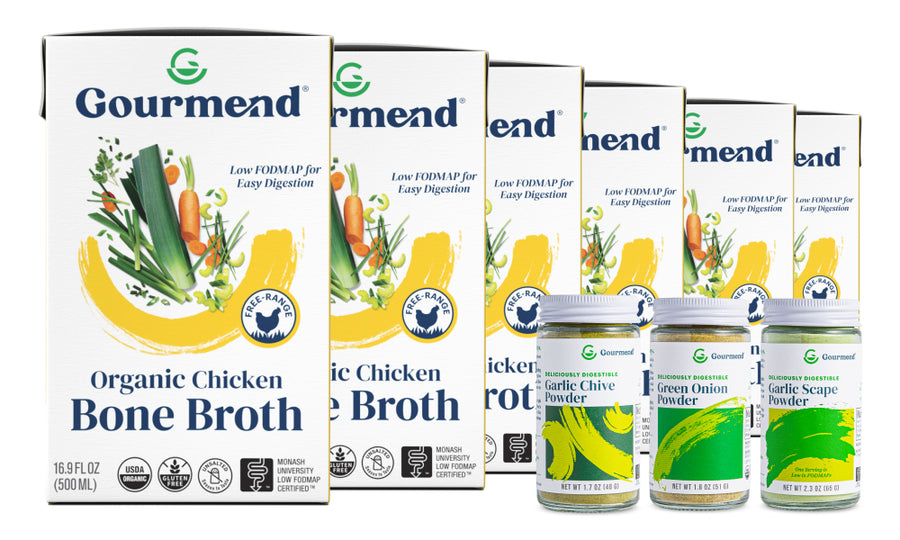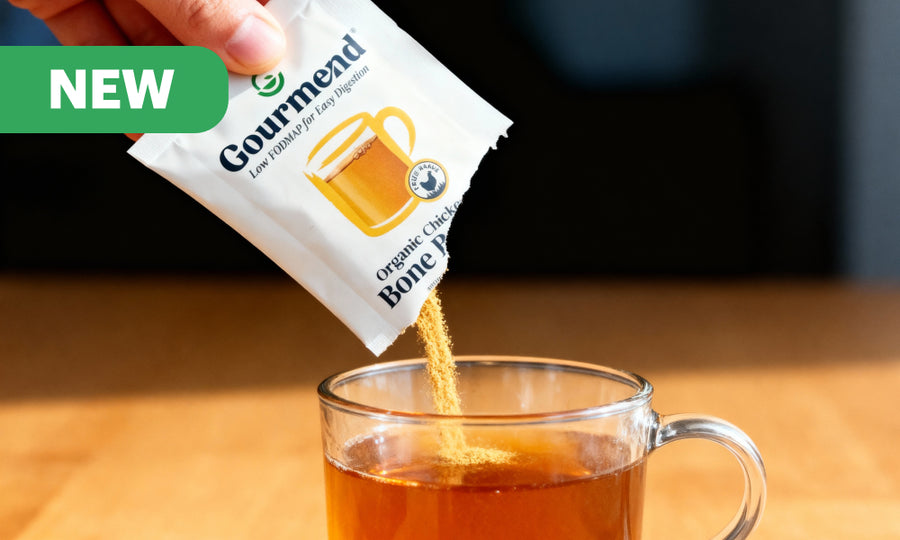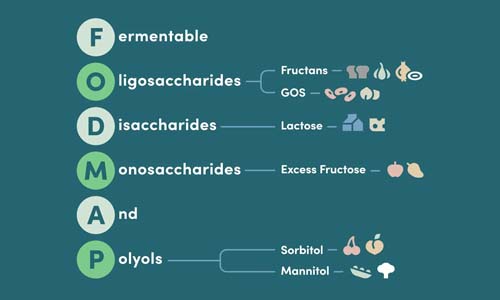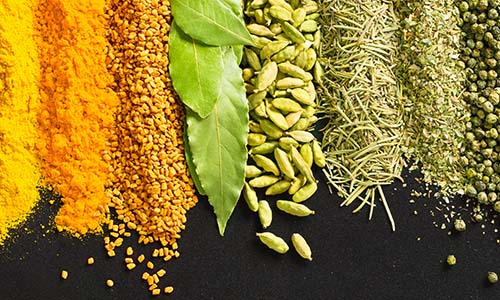Is Mustard Low FODMAP? Your Gourmet, Gut-Friendly Guide
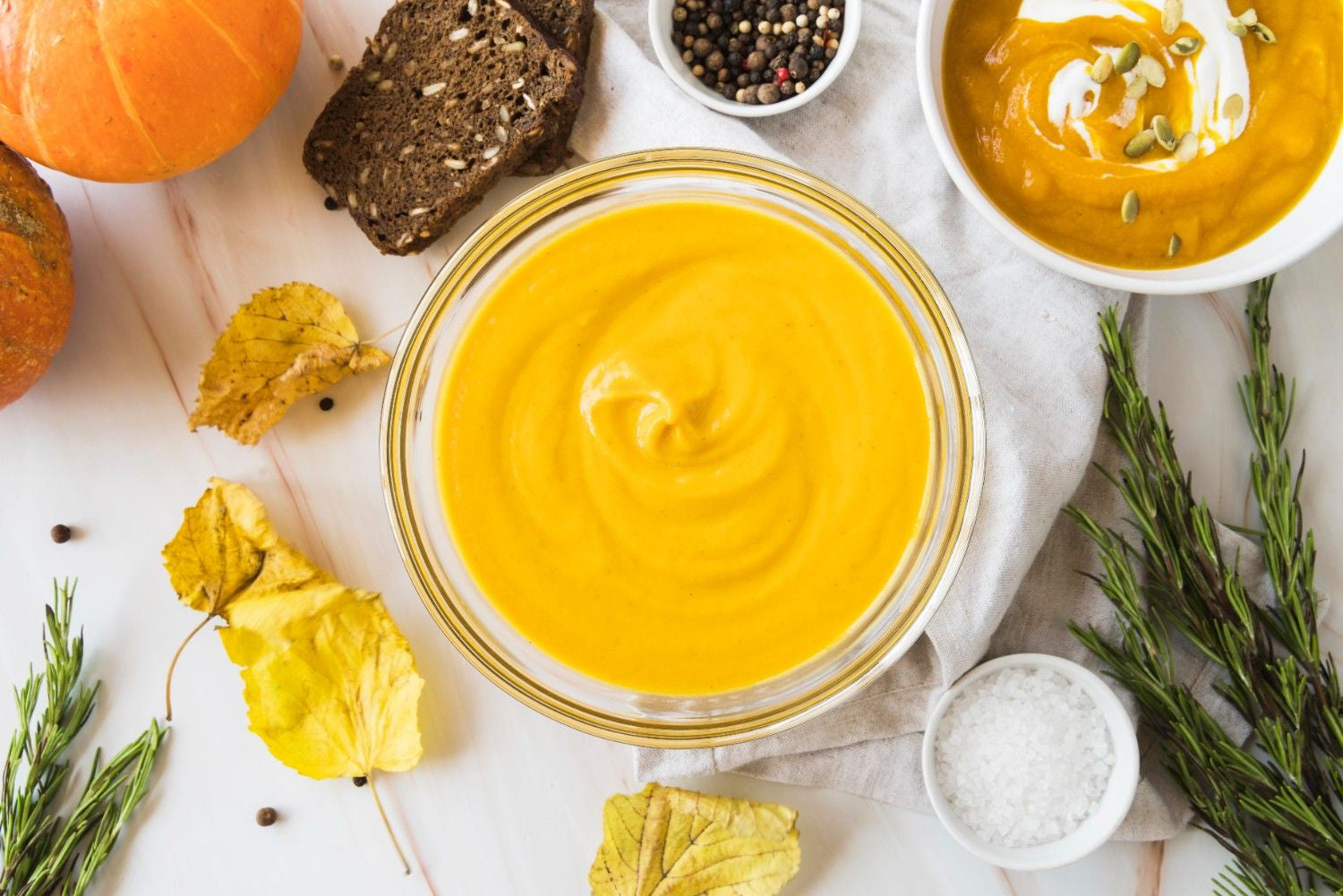
Key Takeaways
- Mustard is typically low FODMAP when consumed in standard serving sizes of 1 tablespoon.
- Yellow mustard and most Dijon varieties are considered the safest low FODMAP options.
- Mustard’s simple ingredient profile makes it a great choice for those following a low FODMAP diet.
- FODMAPs are carbohydrates that can cause digestive discomfort in sensitive individuals.
- Mustard combines bold flavor with digestive comfort, making it ideal for gut-friendly cooking.
Table of Contents
- Mustard Meets Low FODMAP, A Flavorful First Step
- What is Mustard, Really? Gourmet, Global, and Gut-Savvy
- What Makes a Condiment Low FODMAP? The Science and Serving Size
- Mustard Spotlight: Is Mustard Low FODMAP?
- Label Sleuth: How to Identify Low FODMAP Mustard at the Store
- Yellow vs Dijon: Mustard Varieties Compared for FODMAP Safety and Flavor
- Store-Bought vs Homemade: Building a Safer, Brighter Mustard
- Beyond Mustard: How It Stacks Against Other Low FODMAP Condiments
- Mustard on Your Plate: Gourmet Applications for Low FODMAP Living
- Troubleshooting: When Mustard Isn't Settling Well
Mustard Meets Low FODMAP, A Flavorful First Step
At Gourmend Foods, we believe bold flavor and digestive comfort go hand in hand. If you're wondering is mustard low FODMAP, you've struck culinary gold. FODMAPs, fermentable oligosaccharides, disaccharides, monosaccharides, and polyols, are specific carbohydrates that can trigger digestive discomfort in sensitive individuals. The good news? Mustard's simple ingredient profile makes it a reliable ally in your low FODMAP kitchen arsenal.
Most traditional mustards contain mustard seeds, vinegar, water, and salt, ingredients that won't upset your digestive balance. However, flavored varieties and certain brands sneak in high FODMAP culprits like garlic or onions. We'll guide you through choosing wisely and using mustard to elevate every meal without compromise.
What is Mustard, Really? Gourmet, Global, and Gut-Savvy

Mustard transforms humble seeds into liquid gold through ancient alchemy. Dating back 6,000 years, this condiment evolved from Egyptian burial chambers to French monastery kitchens, becoming the world's second-most popular spice after black pepper.
The magic lies in myrosinase enzymes that activate when mustard seeds meet liquid, creating that distinctive sharp bite. Yellow mustard uses white seeds with turmeric for color, delivering mild heat perfect for American classics. Dijon mustard employs brown seeds and white wine, creating sophisticated tang that transforms vinaigrettes. Wholegrain mustard keeps seeds partially intact, adding textural interest and rustic appeal.
| Mustard Type | Primary Seeds | Key Ingredients | Flavor Profile | Classic Uses |
|---|---|---|---|---|
| Yellow | White/Yellow | Seeds, vinegar, turmeric | Mild, tangy | Hot dogs, potato salad |
| Dijon | Brown | Seeds, white wine, salt | Sharp, complex | Vinaigrettes, glazes |
| Wholegrain | Mixed | Cracked seeds, wine, herbs | Textured, robust | Charcuterie, roasts |
Understanding these foundations helps you navigate labels confidently, spotting potential FODMAP troublemakers before they reach your cart.
What Makes a Condiment Low FODMAP? The Science and Serving Size
Low FODMAP condiments follow strict portion guidelines established by Monash University researchers. For mustard, the magic number is 1 tablespoon per serving, enough to brighten a sandwich or create a zippy dressing without triggering digestive distress.
The FODMAP risk in mustards comes from additives, not the seeds themselves. Mustard seeds are naturally low in problematic carbohydrates, but manufacturers often introduce complications:
- Garlic powder or granules (high in fructans)
- Onion powder (fructan-rich troublemaker)
- Inulin or chicory root (added fiber that spells digestive chaos)
- Wheat flour (thickener containing fructans)
- High fructose corn syrup (excess fructose)
Manufacturing processes matter too. Fermentation can reduce FODMAP content in some cases, while certain filtering methods concentrate problematic compounds. This is why is mustard low FODMAP depends entirely on specific ingredients and portions, not just the mustard category broadly.
Mustard Spotlight: Is Mustard Low FODMAP?
The definitive answer: Yes, mustard is low FODMAP when you choose clean varieties and respect serving sizes. Monash University testing confirms that traditional yellow and Dijon mustards are safe in 1-tablespoon portions for most people following low FODMAP protocols.
Your safest choices prioritize simple ingredient lists. Plain yellow mustard made with mustard seeds, vinegar, water, salt, and turmeric consistently tests low FODMAP. Traditional Dijon varieties using brown mustard seeds, white wine or vinegar, and salt also pass muster.
| Mustard Style | FODMAP Status | Safe Serving | Common Risk Ingredients | Best Applications |
|---|---|---|---|---|
| Yellow/American | Low FODMAP | 1 tablespoon | Rarely problematic | Sandwiches, dressings |
| Traditional Dijon | Low FODMAP | 1 tablespoon | Watch flavored varieties | Vinaigrettes, glazes |
| Wholegrain | Usually safe | 1 tablespoon | Added wine, herbs | Charcuterie, roasted meats |
| Honey Mustard | Caution needed | Check ingredients | Excess fructose, additives | Dipping, light glazing |
| Flavored Varieties | High risk | Read labels carefully | Garlic, onion powders | Specialty applications |
The key insight: is mustard low FODMAP depends more on what manufacturers add than the mustard itself. Stick with traditional varieties featuring short, recognizable ingredient lists for consistent digestive comfort.
Label Sleuth: How to Identify Low FODMAP Mustard at the Store

Successful mustard shopping requires strategic label scanning. Start with the first five ingredients, they comprise the bulk of the product. Red flags appear as "natural flavors" (often garlic or onion), "spices" (vague and potentially problematic), or any mention of inulin, chicory root, or wheat flour.
Your scanning checklist:
- Green lights: Mustard seeds, vinegar, water, salt, turmeric, wine
- Yellow lights: "Natural flavors," "spices" (contact manufacturer for clarity)
- Red lights: Garlic powder, onion powder, inulin, wheat flour, high fructose corn syrup
When labels leave you guessing, contact the brand directly or choose homemade alternatives. Our recipe conversion tool helps transform any mustard recipe into a gut-friendly version using clean ingredients.
Yellow vs Dijon: Mustard Varieties Compared for FODMAP Safety and Flavor
Yellow mustard wins the safety contest with its straightforward formula and mild heat. Made from white mustard seeds with turmeric for color, it rarely contains problematic additives. The vinegar base and simple seasoning make it virtually foolproof for low FODMAP eating.
Dijon mustard offers sophisticated flavor complexity but requires more careful selection. Authentic French Dijon uses brown mustard seeds and white wine or verjuice, creating sharp, wine-forward notes. German-style Dijon variations may include additional herbs or spices that could introduce FODMAP risks.
| Criteria | Yellow Mustard | Traditional Dijon | Wholegrain Mustard |
|---|---|---|---|
| FODMAP Risk | Very low | Low | Low-moderate |
| Ingredient Complexity | Simple (4-5 ingredients) | Moderate (5-7 ingredients) | Complex (7+ ingredients) |
| Heat Level | Mild | Sharp, intense | Variable, textured |
| Best Applications | Everyday use, mild dishes | Gourmet cooking, vinaigrettes | Charcuterie, robust flavors |
Wholegrain mustard delivers textural interest but introduces variables. Partially crushed seeds create rustic appeal, while wine, herbs, or honey additions can complicate FODMAP safety. Always verify ingredients before purchasing flavored or artisanal varieties.
Store-Bought vs Homemade: Building a Safer, Brighter Mustard
Homemade mustard grants complete ingredient control, eliminating guesswork about FODMAP safety. You choose every component, adjust heat levels, and create signature flavor profiles that store-bought versions can't match.
Store-bought mustard offers convenience and consistency, but requires vigilant label reading. Look for short ingredient lists with recognizable components, mustard seeds, vinegar, water, salt, and spices are your safest bets.
For a delicious side to pair with your homemade mustard, try these low FODMAP crisp roasted baby potatoes.
Basic Homemade Yellow Mustard:- 2 tablespoons yellow mustard powder
- 2 tablespoons white wine vinegar
- 1 tablespoon water
- Pinch of salt
Whisk together, let sit 10 minutes for flavors to meld. Stores refrigerated for up to 3 months.
Beyond Mustard: How It Stacks Against Other Low FODMAP Condiments

Is mustard low FODMAP compared to your other condiment options? It's among the safest choices when portion-controlled.
| Condiment | FODMAP Risk | Safe Serving | Common Pitfalls |
|---|---|---|---|
| Mustard | Low | 1 tablespoon | Flavored varieties with chive sprigs or garlic-chive stems |
| Ketchup | Moderate | 1 tablespoon | High fructose corn syrup |
| Mayonnaise | Low | 2 tablespoons | Garlic-chive stems in flavored versions |
| BBQ Sauce | High | 1 tablespoon max | Chive sprigs, garlic-chive stems, high fructose corn syrup |
Mustard's advantages: Clean ingredient profiles, bold flavor impact with small servings, and natural preservation without problematic additives. Unlike BBQ sauce, which often contains multiple FODMAP triggers, quality mustard typically contains just mustard seeds, vinegar, and spices.
For a hearty main dish that pairs beautifully with mustard, try this low FODMAP braised short ribs.
Gourmend's approach elevates any condiment choice. Our bone broths create rich bases for homemade sauces, while our seasonings add complexity without FODMAP concerns. Try whisking Gourmend Vegetable Broth into your mustard vinaigrettes for extra umami depth.
To learn more about FODMAPs and their impact on digestive health, see this comprehensive overview of FODMAPs.
Mustard on Your Plate: Gourmet Applications for Low FODMAP Living
Transform everyday meals with these mustard-forward techniques that respect both your digestive comfort and culinary ambitions.
Maple-Mustard Chicken Glaze:- 2 tablespoons Dijon mustard
- 1 tablespoon pure maple syrup
- 1 cup Gourmend Chicken Bone Broth
Simmer until reduced by half. Brush over chicken in final 10 minutes of roasting. The broth adds richness while keeping the glaze low FODMAP-friendly.
Chive-Mustard Vinaigrette:- 1 tablespoon grainy mustard
- 3 tablespoons olive oil
- 1 tablespoon white wine vinegar
- 1 tablespoon fresh chive sprigs, minced
Whisk together for a dressing that brings restaurant-quality flavor to simple greens.
Quick Mustard Marinade:- 2 tablespoons yellow mustard
- ½ cup Gourmend Beef Bone Broth
- 1 tablespoon fresh herbs (thyme or oregano)
Marinate proteins 30 minutes to 4 hours. The bone broth tenderizes while mustard adds tangy complexity.
For a gourmet rice dish that complements mustard-based meals, try this simple low FODMAP gourmet risotto.
Serving size accuracy matters: Stick to 1-2 tablespoons of mustard per serving across all applications. These recipes serve 4, keeping individual mustard portions well within safe limits.
Troubleshooting: When Mustard Isn't Settling Well
If mustard triggers discomfort despite following low FODMAP guidelines, systematic troubleshooting reveals the likely culprit.
Most common causes:
- Hidden ingredients: Flavored mustards with chive sprigs or garlic-chive stems you missed on the label
- Portion creep: That "tablespoon" became two without measuring
- Cross-contamination: Mustard mixed with high FODMAP foods in the same meal
- Brand inconsistency: Switching products without re-checking ingredients
Step-by-step solutions:
- Track precisely: Log mustard brand, amount, and timing for one week
- Eliminate temporarily: Remove mustard for 3-5 days, then reintroduce with careful measurement
- Try homemade: Control every ingredient with a basic recipe
- Switch varieties: If Dijon causes issues, test plain yellow mustard
- Check timing: Some people tolerate mustard better with food than alone
For more on the science behind FODMAPs and digestive symptoms, see this peer-reviewed article on FODMAPs and gut health.
When to seek professional help: Persistent reactions to multiple mustard varieties, or digestive symptoms that worsen over time, warrant consultation with a registered dietitian specializing in digestive health.
Remember: Individual tolerance varies. What works for other Gourmend customers might need adjustment for your unique digestive profile.
Frequently Asked Questions
Is mustard safe to consume on a low FODMAP diet and what serving size is recommended?
Yes, mustard is generally safe on a low FODMAP diet when consumed in standard serving sizes of about 1 tablespoon. Sticking to this amount helps keep FODMAP intake low while enjoying mustard’s bold flavor.
Which types of mustard are considered the safest options for those following a low FODMAP diet?
Yellow mustard and most Dijon mustard varieties are considered the safest low FODMAP options. These types typically have simple ingredient profiles that align well with digestive comfort.
How can I identify low FODMAP mustard varieties when shopping at the store?
Look for mustards with straightforward ingredients like mustard seeds, vinegar, water, salt, and turmeric. Avoid varieties that list garlic, onion, or other high FODMAP ingredients on the label to ensure gut-friendly choices.
What ingredients in mustard should be avoided to prevent digestive discomfort on a low FODMAP diet?
Avoid mustards containing garlic, onion, or their derivatives, as these are high FODMAP and can cause digestive discomfort. Choosing mustards without these ingredients supports easier digestion and less bloating.
